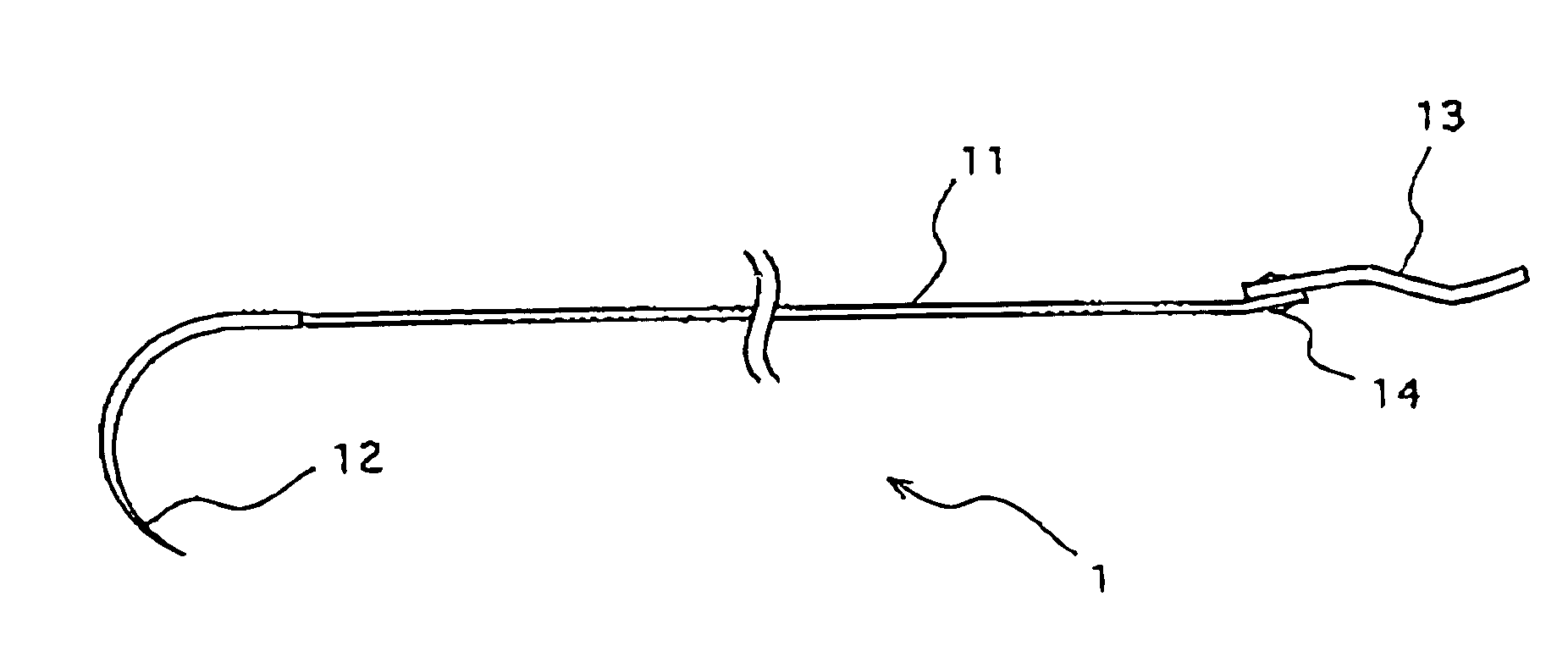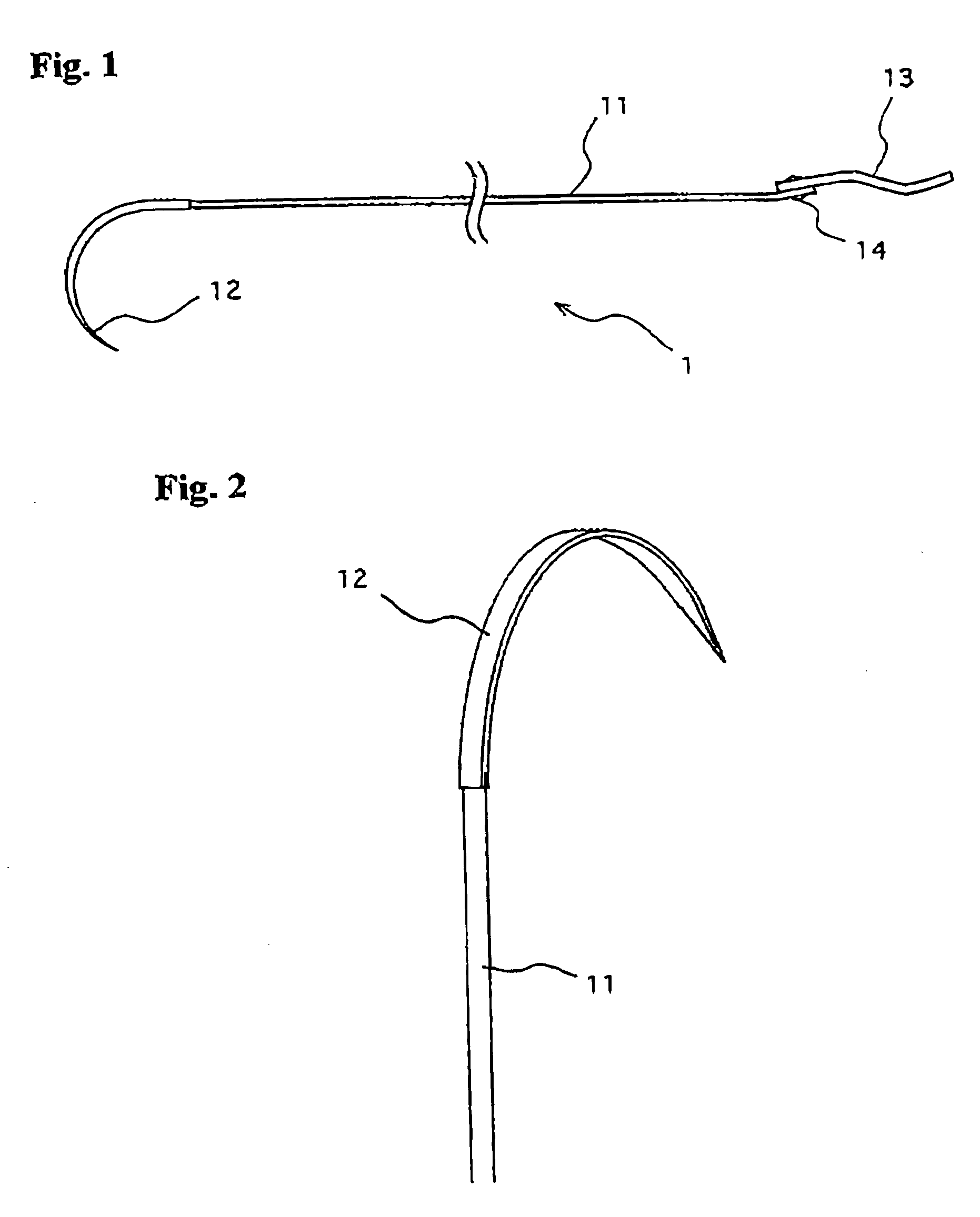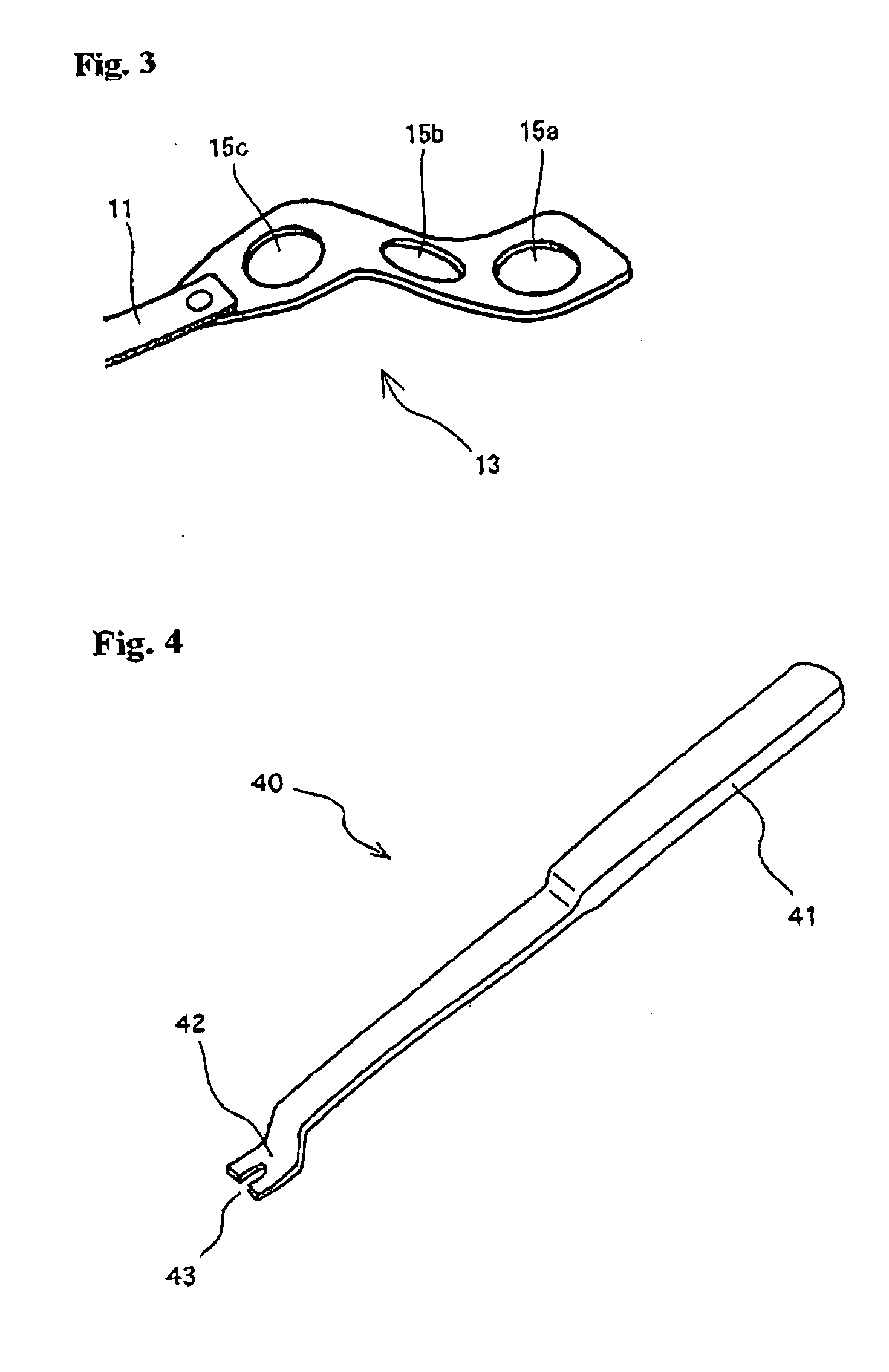Bone fixation device for surgical operation, cutting device and band head for the same
- Summary
- Abstract
- Description
- Claims
- Application Information
AI Technical Summary
Benefits of technology
Problems solved by technology
Method used
Image
Examples
first embodiment
[0038]FIG. 1 is an illustration showing the configuration of the first embodiment of the fixation device according to the present invention. As shown in FIG. 1, a bone fixation device 1 comprises a long strip-shaped band 11, a needle 12 provided at one end of the band 11, and a band head 13 provided at the other end of the band 11. Each of the elements is made of biocompatible metallic material and, desirably, of the non-ferritic (non-magnetic) high quality stainless steel. As an example of such metal, stainless steel 316LVM (product name), a product of Sandvik AB, can be preferably used.
[0039] The band 11 has flexibility and plasticity and it is formed to have a length of about 150-400 mm, a width of about 1.5-12.0 mm, and a thickness of about 0.1-1.0 mm, for example. The needle 12 is curved so that it can be set behind the bone and then pulled through to the front again. It is formed in a length of about 40-60 mm, a width of about 1.5-3.5 mm, and a thickness of about 1.0-2.0 mm. ...
second embodiment
[0050] Next, the second embodiment of the bone fixation device according to the present invention will be described. FIG. 9 and FIG. 10 are illustrations for describing a bone fixation device 60 according to the embodiment and the using method of the device. In the embodiment, a band head 61 of the band 60 is not in roughly an N-letter shape and is constituted of a single flat plate comprising three through-holes 62a, 62b, and 62c. Other configurations are the same as those of the first embodiment shown in FIG. 1.
[0051] The band 63 is placed around the bone by using the bone fixation device 60 of the embodiment, and the needle is cut off from the band 63 by using a device such as a cutter or the cutting tool 50 (not shown). After confirming that there is no twist in the band 63, as shown in FIGS. 9(a)-9(b), the free end of the band is inserted into the first through-hole 62a from over the bead 61 and is pulled out to the top from the third trough-hole 62c. Then, as shown in FIG. 9(...
third embodiment
[0054]FIG. 11 is a side view showing the configuration of the third embodiment of the bone fixation device according to the present invention. As shown in FIG. 11, in a bone fixation device 70 of the present invention, a band 71 and a band head 72 are integrally molded. In this bone fixation device 70, the head 72 is formed to be thicker than the band 71 for increasing the strength. Other configurations are the same as those of the bone fixation device 60 of the second embodiment. With this configuration, it becomes unnecessary to fasten the band and the band head by the rivet. Thus, the number of components can be decreased and the height of the bone fixation device 70 can be lowered for the height of the rivet. As the method for manufacturing the bone fixation device 70, there may be a method in which a metal plate with the thickness of the band head 72 is prepared and is cut into a desired shape, and only the part for the band 71 is then stretched thin.
PUM
 Login to View More
Login to View More Abstract
Description
Claims
Application Information
 Login to View More
Login to View More - R&D
- Intellectual Property
- Life Sciences
- Materials
- Tech Scout
- Unparalleled Data Quality
- Higher Quality Content
- 60% Fewer Hallucinations
Browse by: Latest US Patents, China's latest patents, Technical Efficacy Thesaurus, Application Domain, Technology Topic, Popular Technical Reports.
© 2025 PatSnap. All rights reserved.Legal|Privacy policy|Modern Slavery Act Transparency Statement|Sitemap|About US| Contact US: help@patsnap.com



